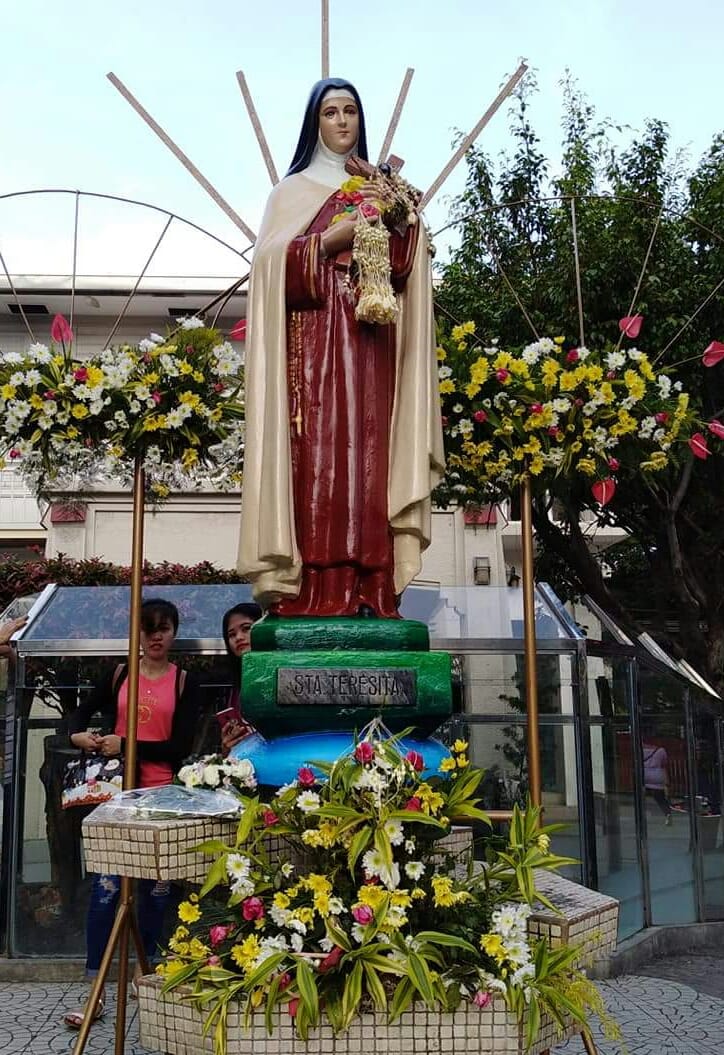
On this 1st day of October, Catholics around the world honor the life of St. Thérèse of the Child Jesus, or St. Thérèse of Lisieux. She is popularly known as “The Little Flower of Jesus”, or simply “The Little Flower.” Thérèse has been a highly influential model of sanctity for Catholics and for others because of the simplicity and practicality of her approach to the spiritual life. Together with Saint Francis of Assisi, she is one of the most popular saints in the history of the church. Since her death, millions have been inspired by her ‘little way’ of loving God and neighbor.
Did you know that the Baclaran Church was originally dedicated to St Teresa of the Child Jesus. But as divine providence intervened, Mary Our Mother of Perpetual Help, would become the patron of the shrine.
How did St. Thérèse get relegated from primary patroness to secondary patroness of the shrine?
The original intention to dedicate Baclaran church to St. Thérése was engraved in the corner stone of the Monastery on Sept. 13th, 1931 at the beginning of its construction:
At the request of Most Rev. Fr. General Murray and with the approval of His Grace, the Monastery and Church are to be dedicated to St Teresa of the Child Jesus, the patroness of the missions. The secondary Patrons shall be the Sacred Heart of Jesus, the Blessed Virgin Mary under the title of Mother of Perpetual Succor, St Joseph, St. Alphonsus, St. Clement and St. Gerard.
After the first Baclaran church was built, the Redemptorist asked for donations from the people in building and adorning the small wooden chapel. The Ynchausti family came, along with friends and benefactors, with the intention of donating a beautiful high altar to the congregation. They had one condition, however, that the icon of Our Mother of Perpetual Help (OMPH) ought to occupy the high altar. This would conflict with the intention of the pioneer Redemptorists, particularly Fr. Dennis Grogan, the main builder of the church, to have the chapel in honor of St. Thérèse.
Thus, a drama unfolded: Who would get the high altar, St. Thérèse or OMPH? Fr. Grogan unfolds this drama on an entry in the Chronicles dated Feb 1, 1932:
I am preparing the House and Church for the arrival of the Fathers and Brothers from Australia. The new high altar given by Sra. De Ynchausti arrived. It was designed and made by Mr. Maximo Vicente under the guidance of the donor. It became the high altar very providentially. Sta. Teresita being the Patroness should naturally have been there and for the first Mass celebrated in the church she was actually installed but when the donor offered her altar, she expressed the wish that it should be the high altar. I proposed her wish to Father Provincial (Byrne) with a good recommendation and he decided it should be so. The delay in communicating brought us near to the Opening Day and hearing nothing from Australia we gave orders that the plans should be changed and the altar made smaller to suit the aisle, but at that very moment, while the designer was in the house, the mail arrived from Australia and all was changed. Our Lady of Perpetual Succor (Help) was given the High Altar and Sta. Teresita on her right side, with St. Gerard on the left.
As history unfolds, the Redemptorists transferred St. Thérèse’s statue to the grounds in front of the convent. This seems a more fitting place as more people have been able to touch her. This also serves as a providential reminder that the saint once had a brief reign in the shrine, before it was finally dedicated to the Blessed Virgin.